California is facing wildfires "outside of any normal bounds" as a historic drought turns drying brush and trees into a perfect tinderbox, officials have warned. The state recorded 665 wildfires from 1 January, about three times the average of 225 for this time of year, according to figures compiled by Cal Fire, the state's department of forestry and fire protection.
Each day without heavy rain deepened the risks of a catastrophic fire season and made it hard to deal with more wildfires if and when they broke out, officials warned. John Laird, the secretary for natural resources, told the Guardian: "This is going to be a fire season outside any normal bounds. Anything could happen at any time."
Although the wildfire season does not officially start until May in the foothills of the Sierra Nevada, locals are adjusting to life on a year-round frontline.
"This is the first time it really hit home that we have this danger," said Annette Lambert, who lives with her husband and two young children on top of a thickly wooded slope with spectacular canyon views. More than 200 communities across the state, including those overlooking Auburn, were designated fire-risk zones in the drought.
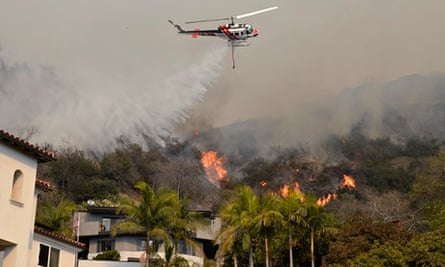
The Lambert family knew they were entering a potentially dangerous area 10 years ago when they built on land covered by oak, pine, and evergreen manzanita shrubs.
The area, called Meadow Vista, meanders along the hilltops along a road too narrow for a conventional fire engine. Most of the homes are surrounded by trees and manzanitas; keep chicken coops or horses. Some of the houses were situated in such a way as to channel fire to straight up to the back door, according to fire inspectors.
"We got it from the shape of the land that fire could course right up the hill and was going to be an issue for us, and a risk that we would have to deal with," said Lambert. "But we loved the trees."
They had trouble finding homeowners' insurance because the house lies more than a mile from the nearest fire hydrant.
In 2009, the Lamberts were ordered to evacuate, after a wildfire raged through a nearby district, destroying more than 60 homes. The fire ranks as the worst in a decade in the Sacramento area. "That was the first real scare," Lambert said.
Learning the state fire agency had designated their area of Meadow Vista as a high-risk area, because of the drought and a thick brush cover that could easily catch fire from a stray spark, brought those fears to life. "It does make you see the area differently," said Lambert.
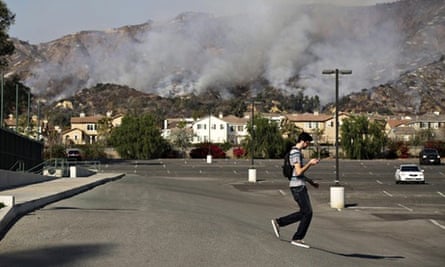
"We have this heavily wooded area. It is very beautiful, but it is also very dangerous when we have these dry conditions," she said. "From the beginning of winter, when the rains didn't come and we would get all this information about how low the reservoir in Folsom Lake was, you start getting this steadily burning dread about what could happen."
The Obama administration announced on Monday that it would set aside disaster funds for "mega-fires" across the western states which, like California, are experiencing drought. But local officials told reporters that when it came to fire risks California was now in a class of its own. It is as dry in the foothills and in southern California as during a typical July – the height of the fire season.
Many of the fires recorded up to 8 March were unusually big, roaring through up to 40 hectares a time. Some 3,000ha have been destroyed so far this year, compared with 2,000ha last year, which already ranked as a bad year for fire.
Even before this year's drought, forest officials were reporting a longer fire season, and more catastrophic mega-fires, in California and other western states. Half of the worst fires in recorded Californian history have occurred since 2002.
Climate change and land-use patterns are adding fuel to those fires. Higher temperatures, with recurring and intensifying droughts are drying out landscapes. Pest invasions, such as the pine bark beetle, have killed off stands of trees.
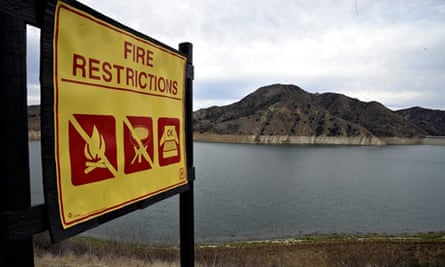
California's state fire chief, Ken Pimlott, said: "We can't recall when we have seen this level of fire activity early in this year.
"This is usually the time of year when much of the state is greening up. We haven't even got into the months that historically are the worst in California – late August, September and October – so that's a big red flag right there."
The agency is already sending inspectors door-to-door, two months earlier than in a typical year, asking homeowners to cut back tree branches within 10 metres of their homes, and sweep up dead leaves and other debris that could feed a fire.
In these drought conditions, overgrown shrubs and even a tree stump embedded in soil pose a potential risk, said inspector Jordan Smith. So do dead leaves left to gather by the side of a house, even the upholstery of deckchairs, left out on the porch.
Sometimes the location itself is the hazard. "If a fire is going to start at the bottom and you had the right conditions, a fire could run right up here in a matter of minutes," Smith said, peering down hill from one of the houses on this route.
The agency is also working to stockpile water for fighting fires. Fire crews typically rely on helicopters scooping up 1,500-litre buckets of water from ponds and streams to put out flames. But many of these have already dried up because of the drought, and officials say crews may have to fly further in search of water.
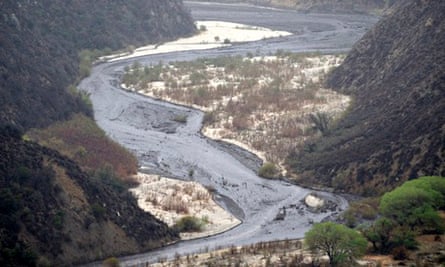
The state fire agency for years had worked to put out nearly all fires, about 95%, before they spread beyond 4 hectares. That goal may now have to slip, Pimlott acknowledged.
"As conditions dry out and fire conditions become more extreme that goal can be challenging," said Pimlott. Crews may just encounter too many fires at once. But the agency hopes that stockpiling water and protecting homes would give fire crews a headstart.
"We are always going to have the guys out there on helicopters and we are going to have crews with chainsaws, but we have to give them a fighting chance," Pimlott said.
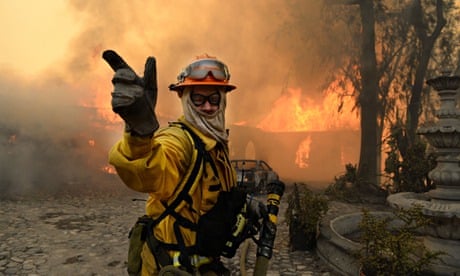



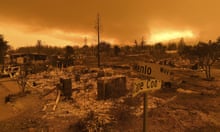
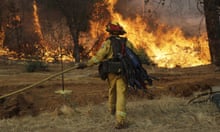
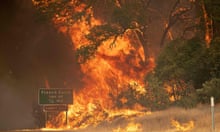



Comments (…)
Sign in or create your Guardian account to join the discussion